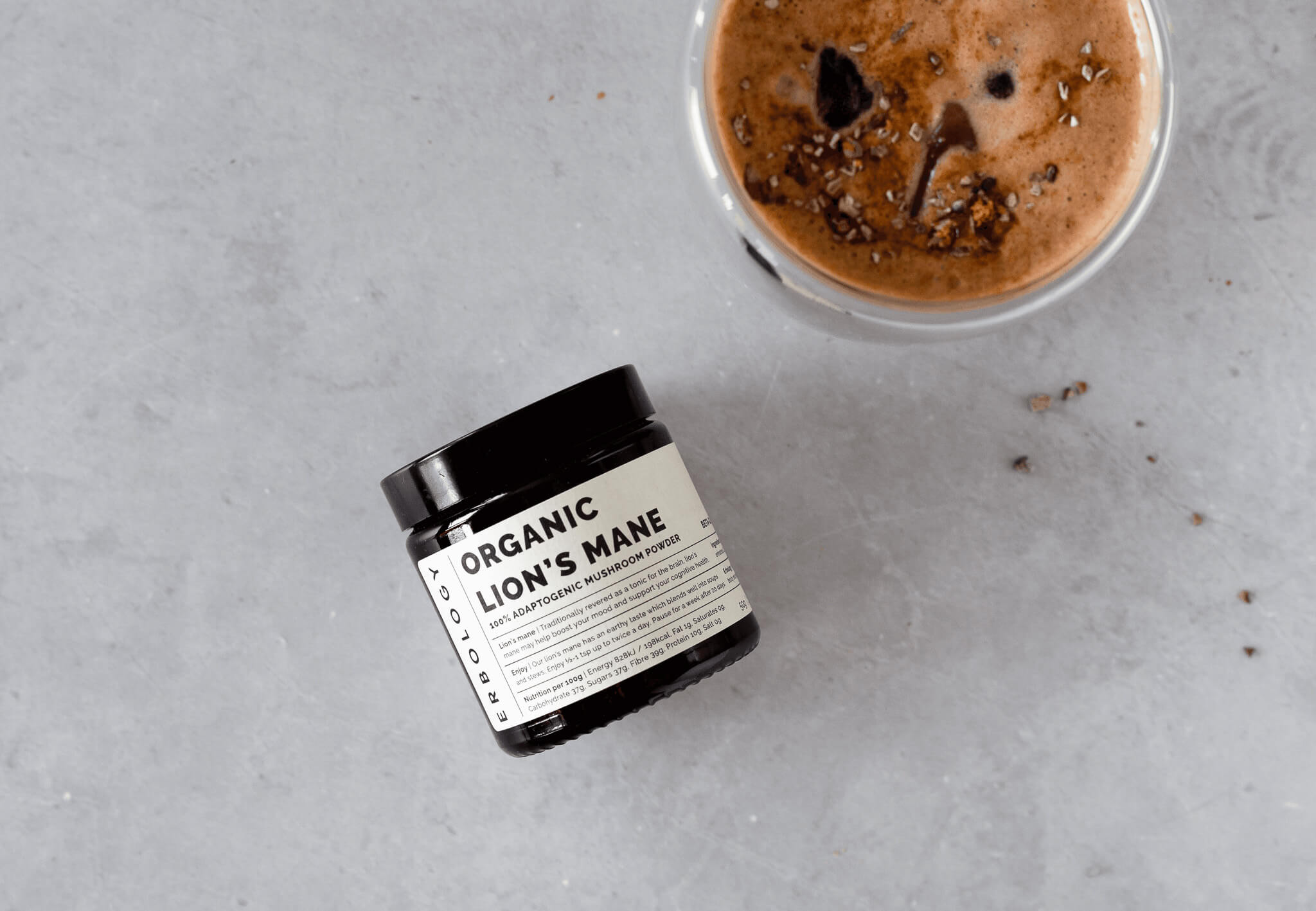16 Apr 2021
Lion’s mane supplement: what’s the best way to take lion’s mane?
The best lion's mane supplement = the one that works for you
In this article, we'll get into all the different ways you can take lion's mane. However, while each has its pros and cons, you should always remember that the best lion's mane supplement is the one that works with your own routine. So, if you know you'll never drink lion's mane tea, try a powder instead! The key with lion's mane, as with any adaptogen, is consistency. You will need to take it every day for a couple of months to see improvements, so our advice is: pick a method you can stick to.
The straight-forward method: fresh
Lion’s mane has been used for thousands of years as part of Traditional Chinese Medicine (TCM).
Unlike other medicinal mushrooms, lion’s mane has a very mild flavour and soft texture. In fact, many people compare it to seafood, like crab, scallops or lobster, as it has a similarly tender and slightly stringy texture.
This means that many people chose to consume it much in the way you’d eat a mushroom from the grocer’s.
Where to buy fresh lion’s mane
If you can get hold of fresh lion’s mane mushroom, you can cook it in a stir fry, stew, or even roast larger slices as a kind of mushroom steak.
The trouble is that in many places it’s quite difficult to find.
Fresh lion’s mane is available in some specialist food shops and online. However, if you choose to go down this route make sure you’re sourcing your mushrooms from a reputable, organic supplier.
Alternatively, many people like to forage for lion’s mane. It’s quite common in North America and some parts of Europe, but is a protected species in the UK.
Mushroom foraging comes with its own dangers - such as mistaking benign mushrooms for poisonous ones - so only attempt this if you’re an experienced forager.
Some companies also offer kits which allow you to grow lion’s mane mushrooms at home.
![]()
How to eat fresh lion’s mane
Like many other mushrooms, lion’s mane is tender and cooks quickly. To cook, remove the ‘foot’ - the part which attaches the mushroom to the tree - and wash. Cut into slices and sauté for a couple of minutes on each side.
Lots of people recommend simply pan-frying in a little butter or olive oil, perhaps adding some crushed garlic too. However you can also throw it into stir fries and stews as you would with shiitake or enoki mushrooms.
Next up, let’s look at mushroom tea.
The traditional method: lion’s mane tea
A traditional way of taking lion’s mane is in the form of tea. This is because hot water helps to extract the healthy nutrients from the mushroom. This is also the case for many other medicinal mushrooms such as reishi, cordyceps and turkey tail.
To make lion’s mane tea, you will need to steep the dried or fresh mushrooms in hot water.
To get the most out of the mushrooms, many people recommend steeping it for longer than you would normally brew tea. For example, some recipes suggest simmering the mushrooms in water for around twenty minutes to get all that goodness out.
You can also make tea using lion’s mane powder. Presumably because the surface area is so much higher when the mushroom is powdered, this cuts down the steeping time quite substantially.
For example, some recipes suggest popping the powder into an infuser (or just putting it loose in a mug) and steeping for around ten minutes before drinking.
Depending on how much you like the flavour of lion’s mane, you can also add other flavourings to your tea. Chai spices are a popular addition.
![]()
The daily supplement method: lion’s mane capsules
Moving into the territory of more modern options, lots of people nowadays take lion’s mane in capsule form. Usually they take one or two capsules per day.
Instructions vary depending on where you’re sourcing your capsules from, but companies often instruct users to take their capsules with a meal.
While it’s easy and convenient, there are a few downsides to taking lion’s mane in the form of a capsule.
The downsides of capsules
The issues with supplement capsules centre around transparency.
For instance, there have been some recent controversies over supplement capsules bought on big online retailers such as eBay and Amazon which have turned out to be counterfeit.(1)
This can be remedied by purchasing from a reputable supplier.
You’re also relying on your supplier to mix the correct dosage and blend of extracts into your capsule. Unless you’re in the habit of breaking it open to examine the contents, or studying the label in detail, it can be easy to miss unwanted extras. These include brown rice flour or freeze-dried rice, often used as a bulking agent.
That’s all without mentioning the capsule itself, which can be made of a variety of materials from gelatine (not suitable for vegans) to vegetable cellulose. Once again, you have to really scrutinise the product labelling, and do your research, to understand what you’re actually ingesting when you take a supplement capsule.
Finally, while some lion’s mane supplements do contain powdered whole lion’s mane, others contain a variety of extracts and plant sections. For example, some capsules contain just the fruiting body of the mushroom, while others contain extracts made with water or ethanol.
Related reading
![]()
undefined

Organic Lion's Mane Mushroom Powder

Organic Lion's Mane Mushroom Snacks

Organic Lion's Mane Mushroom Powder
